- Overview
- Key Topics Covered in the Article:
- The importance of timing for sowing tomato seedlings
- Factors to consider when determining the perfect timing
- Understanding your region and climate
- Determining your region
- Considering your climate
- Consulting local gardening experts
- Conclusion
- Methods for determining the optimal timing
- Foolproof method for determining the perfect timing
- 1. Average Last Frost Date
- 2. Seed Starting Date
- 3. Adjusting for Additional Factors
- 4. How to Sow Tomato Seedlings
- Benefits of Using a Foolproof Method
- “Question-Answer”
- How do I determine the perfect timing for sowing tomato seedlings?
- What is the average number of weeks it takes for tomato seedlings to reach transplant size?
- What happens if I sow tomato seedlings too early?
- Can I sow tomato seedlings directly into the ground instead of using seed trays?
- What are some signs that tomato seedlings are ready to be transplanted?
- Do tomato seedlings need to be hardened off before transplanting?
- “Video” Ep43: What I’m sowing in July | BIG tidy | Tomato pruning | Last rhubarb harvest | Rain & wind!
Tomatoes are one of the most popular and versatile vegetables to grow in home gardens. They can be grown in almost any climate, from the hot and humid regions to the cooler and more temperate areas. However, in order to have a successful tomato harvest, it is essential to sow the seedlings at the right time.
Determining the perfect timing for sowing tomato seedlings can be challenging, especially for novice gardeners. Thankfully, there is a foolproof method that can help you determine the ideal time to sow tomato seedlings, regardless of your region and climate.
The first step is to consider the average date of the last frost in your region. Tomatoes are very sensitive to frost, and planting them too early can result in frost damage or even death of the seedlings. By knowing the last frost date, you can calculate backwards to determine when to sow the tomato seeds.
The next step is to consider the recommended timeframe for starting tomato seeds indoors. Tomato seedlings are typically started indoors 6-8 weeks before the last expected frost date. This allows them enough time to develop strong roots and sturdy stems before they are transplanted outdoors.
For example, if the average last frost date in your region is May 15th, you would want to start sowing your tomato seeds indoors around early to mid-March.
However, it is important to note that this method may need to be adjusted based on your specific climate and growing conditions. For regions with shorter growing seasons or cooler climates, you may need to start sowing the seedlings even earlier to give them enough time to mature and produce a good crop.
In conclusion, determining the perfect timing for sowing tomato seedlings is crucial for a successful harvest. By considering the average last frost date in your region and the recommended timeframe for starting seeds indoors, you can ensure that your tomato seedlings have the best chance of thriving in any region and climate. Happy gardening!
Overview
In the article “When to Sow Tomato Seedlings: A Foolproof Method for Determining the Perfect Timing for Any Region and Climate!”, we will provide a comprehensive guide on determining the ideal timing for sowing tomato seedlings. Whether you are a beginner or an experienced gardener, this article will help you maximize your tomato yield by providing clear guidelines based on various regions and climates.
Tomatoes are a popular crop for home gardeners due to their delicious taste and versatility in culinary dishes. However, successful tomato cultivation starts with sowing the seedlings at the right time. The timing can vary based on factors such as the region’s climate, local frost dates, and the specific tomato variety.
Key Topics Covered in the Article:
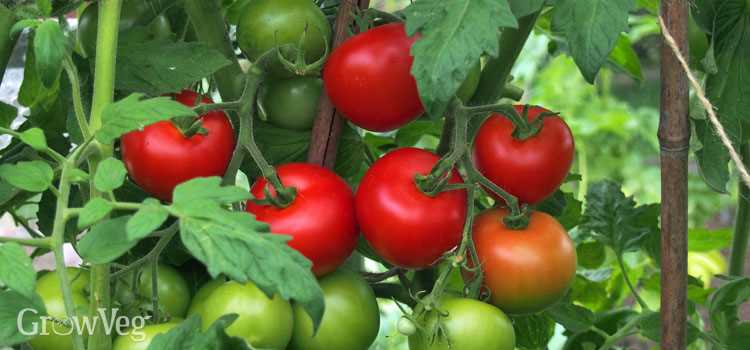
- Importance of sowing tomato seedlings at the right time
- Factors to consider when determining the ideal timing
- Calculation methods for different climates and regions
- How to use frost dates to determine sowing time
- Recommended tomato varieties for different climates
- Tips for caring for tomato seedlings
By following the information provided in this article, you will be able to confidently determine the perfect timing for sowing tomato seedlings in your specific region and climate. Whether you are planting early-season, mid-season, or late-season tomatoes, understanding the nuances of tomato cultivation will greatly enhance your gardening success.
Make sure to stay tuned for the next sections of the article to learn more about the factors to consider and the calculation methods that will guide you in determining the optimal sowing time for your tomato seedlings.
The importance of timing for sowing tomato seedlings
When it comes to growing tomato seedlings, timing is crucial for achieving optimal results. The right timing ensures that the seedlings are at the appropriate stage of growth when they are ready to be transplanted into the garden or larger pots.
1. Climate and region
The climate and region in which you live play a significant role in determining the ideal timing for sowing tomato seedlings. Tomato plants are sensitive to temperature and some varieties require specific heat conditions to thrive. Therefore, it is important to familiarize yourself with the average last frost date and the length of the growing season in your region.
2. Germination time
Tomato seeds typically take around 6 to 10 days to germinate. This information is essential for calculating when to start sowing the seeds to ensure they are ready for transplanting outdoors or into larger pots. Allow enough time for the seeds to germinate and grow into sturdy seedlings before the last frost date in your area.
3. Transplanting stage
It is crucial to consider the desired stage of your tomato seedlings when transplanting them. Ideally, the seedlings should have developed a well-established root system and be strong enough to withstand the transplantation process. Transplanting too early can lead to stunted growth, while transplanting too late can result in the seedlings becoming root-bound.
4. Growth rate
Tomato seedlings have different growth rates depending on the variety. Determining the growth rate of the specific tomato variety you are sowing is important for timing your seed planting properly. Some tomato varieties require a longer growth period before they are ready for transplanting, while others reach the desired stage more quickly.
5. Succession planting
Succession planting is a technique used to ensure a continuous supply of ripe tomatoes throughout the season. By staggering the sowing of your tomato seeds, you can extend the harvesting period. This technique requires careful timing and planning to ensure a continuous supply of tomato plants at different stages of growth.
Conclusion
Taking into account the climate, germination time, desired transplanting stage, growth rate, and succession planting techniques, you can determine the ideal timing for sowing tomato seedlings. By understanding these factors and adjusting your sowing schedule accordingly, you can increase your chances of growing healthy and productive tomato plants.
Factors to consider when determining the perfect timing
- Climate: The first factor to consider when determining the perfect timing for sowing tomato seedlings is the climate of your region. Tomatoes are warm-season plants that require a minimum soil temperature of 60°F (15.5°C) for germination and optimal growth. Understanding the average last frost date and the length of the growing season in your area will help you determine when it is safe to sow tomato seedlings outdoors.
- Variety of Tomato: Different varieties of tomatoes have different optimal growing conditions and maturity times. Determinate tomatoes have a set growth pattern and usually produce fruit within a specific timeframe. Indeterminate tomatoes, on the other hand, have a continuous growth pattern and produce fruit throughout the season. Understanding the maturity time of the tomato variety will help you determine when to sow the seedlings.
- Transplanting Date: If you plan to transplant your tomato seedlings into the garden, you need to consider the recommended transplanting date for your region. Tomatoes are typically transplanted outdoors after the danger of frost has passed and the soil temperature has reached at least 60°F (15.5°C). Planning your sowing date based on the recommended transplanting date will give your seedlings enough time to grow strong and healthy before being planted outside.
- Growing Conditions: The growing conditions, such as sunlight, temperature, and soil moisture, will also impact the timing of sowing tomato seedlings. Tomatoes require at least 6-8 hours of direct sunlight per day for optimal growth. They prefer temperatures between 70-85°F (21-29°C) during the day and around 60-70°F (15-21°C) at night. Additionally, tomatoes need well-drained soil that is consistently moist but not waterlogged.
- Seed Starting Method: The method you choose for starting tomato seeds will also influence the timing. If you plan to start seeds indoors, you will need to sow them earlier to allow for the necessary indoor growing time before transplanting. On the other hand, if you plan to sow seeds directly in the garden, you may need to wait until the soil warms up enough for germination.
Understanding your region and climate
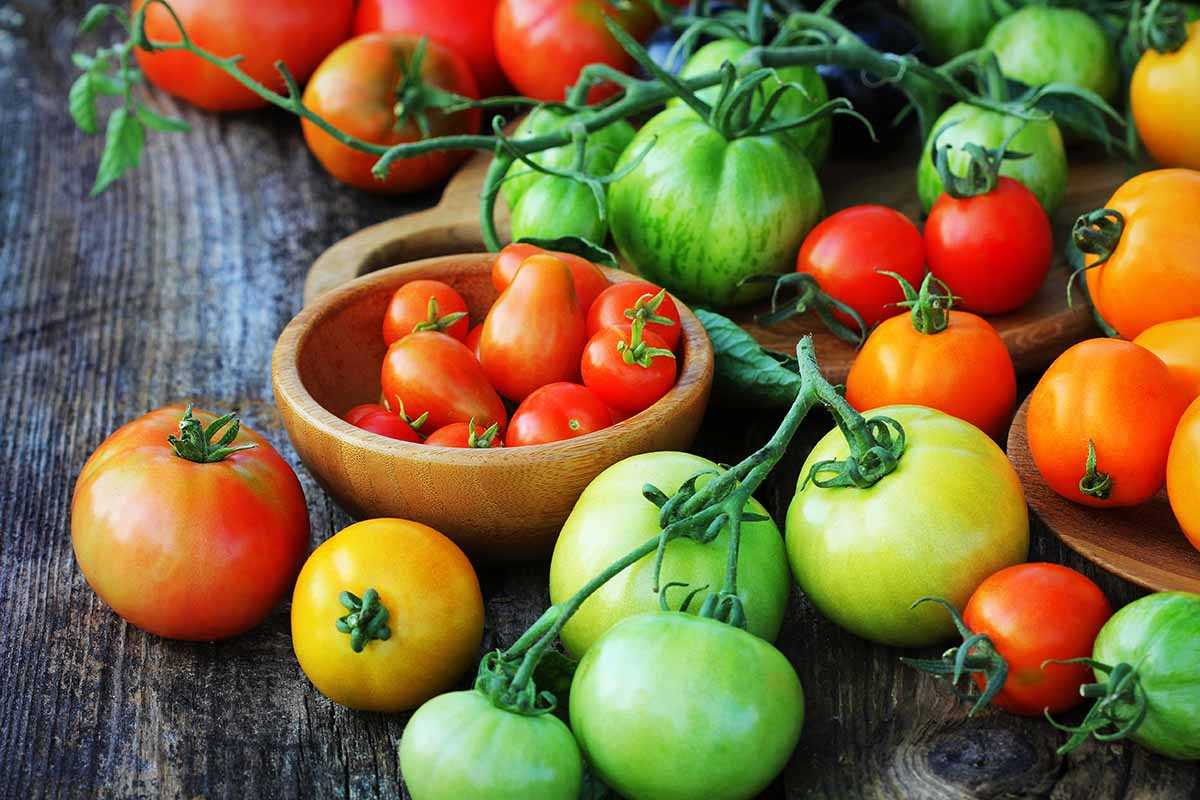
Before you start sowing tomato seedlings, it’s important to understand your region and climate. Tomato plants require optimal growing conditions in order to thrive and produce a bountiful harvest. By understanding your specific region and climate, you can determine the best timing for sowing tomato seeds.
Determining your region
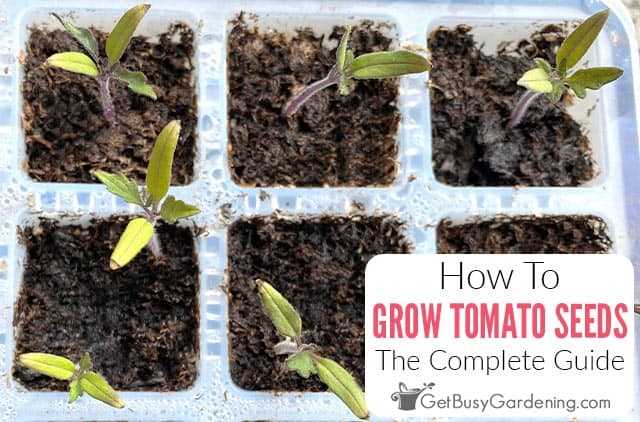
First, identify your USDA hardiness zone. The USDA (United States Department of Agriculture) hardiness zone map divides North America into 11 different zones based on average minimum winter temperatures. Knowing your zone can help you determine when it’s safe to start sowing tomato seedlings.
You can find your specific hardiness zone by using the USDA’s online zone map tool or by consulting local gardening resources. Once you know your zone, you can consult gardening references and charts that provide recommended sowing dates for tomato seedlings based on each zone’s average frost dates.
Considering your climate
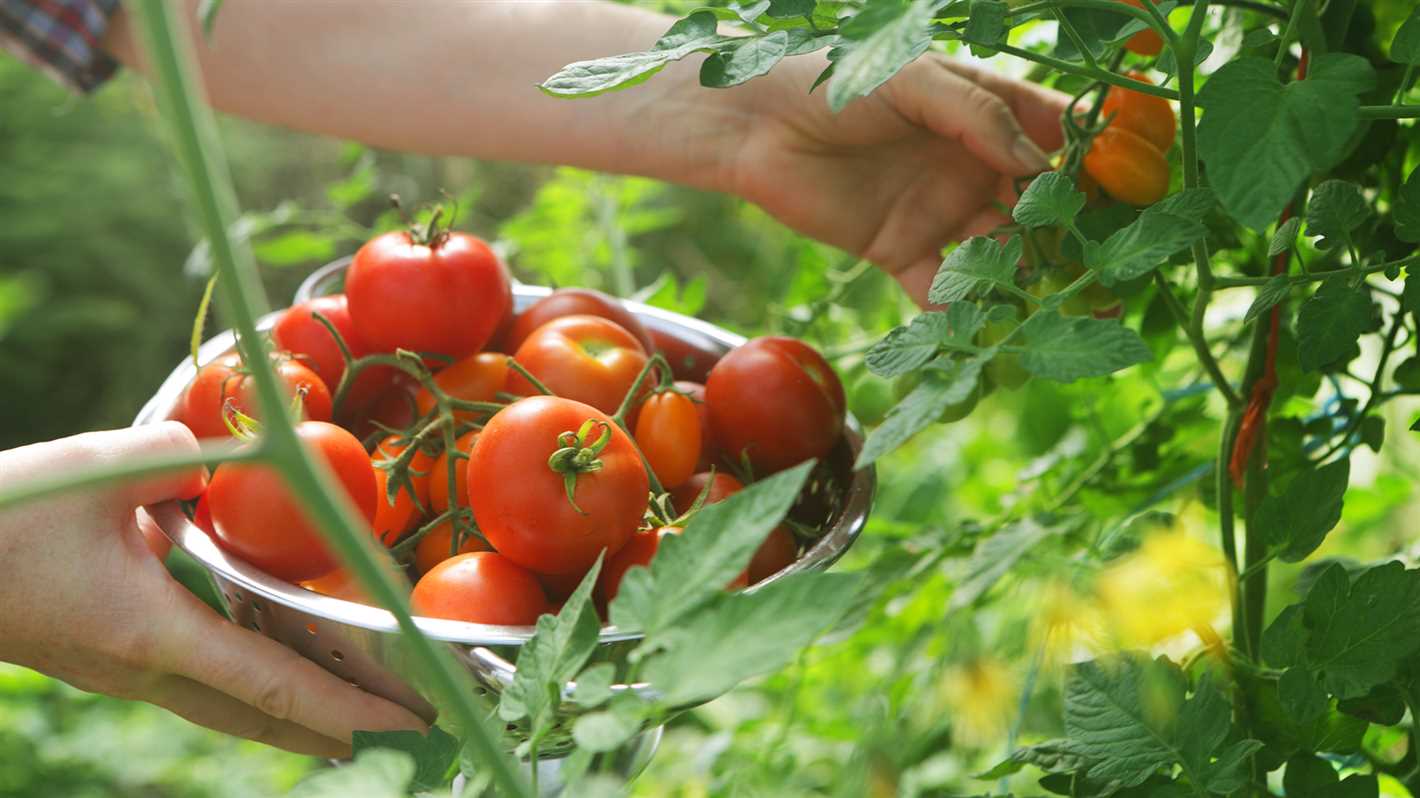
In addition to your hardiness zone, it’s important to consider your specific climate when determining the perfect timing for sowing tomato seedlings. Factors like average temperatures, rainfall, and microclimates within your region can all impact the growth and development of tomato plants.
Here are some key climate-related factors to consider:
- Temperature: Tomato plants prefer warm temperatures, with daytime temperatures between 70°F and 85°F (21°C and 29°C) and nighttime temperatures above 50°F (10°C). If your region experiences extended periods of hot or cold temperatures, you may need to adjust your sowing dates accordingly.
- Heat waves and frosts: Heat waves and late spring frosts can damage or kill young tomato seedlings. Keep an eye on weather forecasts and adjust your sowing dates if extreme heat or frost is expected.
- Rainfall: Tomatoes require consistent moisture, but too much rain can cause issues like root rot or fungal diseases. Consider your region’s rainfall patterns and make sure to provide proper drainage if needed.
- Microclimates: Your garden may have microclimates, which are small areas within your region that have slightly different climates than the surrounding area. For example, a south-facing wall may create a warmer microclimate. Take note of any microclimates in your garden and adjust your sowing dates accordingly.
Consulting local gardening experts
Lastly, don’t hesitate to reach out to local gardening experts, such as Master Gardeners or agricultural extension offices, for guidance specific to your region and climate. These experts have invaluable knowledge and experience that can help you determine the perfect timing for sowing tomato seedlings based on your unique circumstances.
Conclusion
Understanding your region and climate is crucial for determining the perfect timing to sow tomato seedlings. By considering your hardiness zone, climate factors, and consulting local gardening experts, you can ensure that you provide the optimal growing conditions for your tomato plants and maximize your chances of a successful harvest.
Methods for determining the optimal timing
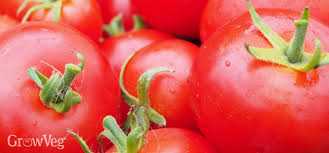
When it comes to sowing tomato seedlings, determining the perfect timing is crucial for their successful growth. Here are some foolproof methods you can use to determine the optimal timing for sowing tomato seedlings in any region and climate:
- Know your average last frost date: The average last frost date is an important factor in determining when to sow tomato seedlings. Consult a local gardening guide or use online resources to find out the average last frost date for your region. Tomato seedlings should be sown indoors about 6-8 weeks before the average last frost date.
- Consider the specific tomato variety: Different tomato varieties have varying growth rates. Determinate tomatoes, for example, mature faster than indeterminate tomatoes. Read the seed packet or do some research to determine the typical time to maturity for the specific variety you want to grow. Count back from the desired maturity date to determine the ideal sowing time.
- Check the soil temperature: Tomato seedlings require a soil temperature of around 60-65°F (15-18°C) for optimal germination and growth. Use a soil thermometer to measure the temperature of your garden soil. If the soil is too cold, you can warm it up by using mulch or row covers.
- Consider your local climate: Every region has its own unique climate conditions that can affect tomato growth. Factors like humidity, rainfall, and temperature fluctuations can impact the development of tomato seedlings. Research recommended planting times for your specific climate to ensure success.
- Plan for the transplanting date: Tomato seedlings need to be transplanted into the garden when the weather conditions are suitable and the risk of frost has passed. Aim to transplant your seedlings outdoors about 1-2 weeks after the average last frost date. This will give them enough time to establish and adapt to the outdoor environment.
- Consider using a seed sowing calendar: Some gardening resources provide seed sowing calendars that are tailored for specific regions or climates. These calendars provide recommended sowing and transplanting dates based on local conditions, making it easy to determine the perfect timing for your tomato seedlings.
By using these methods and taking into account the specific conditions of your region and the tomato varieties you are growing, you can determine the optimal timing for sowing your tomato seedlings. This will give them the best chance of thriving and producing a bountiful harvest.
Foolproof method for determining the perfect timing
When it comes to sowing tomato seedlings, timing is crucial for their successful growth and development. To ensure you sow your tomato seeds at the perfect time, there is a foolproof method that can be followed regardless of your region or climate. By considering a few key factors, you can determine the ideal timing for sowing your tomato seedlings.
1. Average Last Frost Date
The first step in determining the perfect timing for sowing tomato seedlings is to know your region’s average last frost date. This date marks the end of the frosty period and indicates when it is safe to plant tender crops like tomatoes outdoors. You can find this information through local agricultural extension offices or by researching historical weather data for your area.
2. Seed Starting Date
Once you have identified the average last frost date for your region, you need to count back from that date to determine the ideal seed starting date for your tomato seedlings. Most tomato varieties require 6-8 weeks of indoor growth before being transplanted outdoors. Counting back this time frame from the last frost date will give you an approximate seed starting date.
3. Adjusting for Additional Factors
While the average last frost date and seed starting date provide a good starting point, there are additional factors that may influence the perfect timing for sowing tomato seedlings. These factors include the specific tomato variety you are growing, the prevailing weather conditions in your region, and any unique considerations for your garden or microclimate.
4. How to Sow Tomato Seedlings
Once you have determined the perfect timing for sowing your tomato seedlings, follow these steps to ensure successful growth:
- Choose high-quality tomato seeds from a reputable source.
- Start seeds indoors in seed trays or pots filled with a well-draining seed starting mix.
- Plant seeds at a depth of 1/4 inch and cover lightly with the seed starting mix.
- Water the seeds gently using a spray bottle or misting wand to avoid displacing them.
- Keep the seed trays or pots in a warm location (around 70°F) with consistent moisture.
- Once the seedlings have developed their second set of true leaves, transplant them into larger pots or containers.
- Harden off the seedlings by gradually exposing them to outdoor conditions for a week before transplanting them into the garden.
- Plant the seedlings in a sunny location with well-draining soil, ensuring they have ample space to grow.
- Water the seedlings regularly, keeping the soil evenly moist but not waterlogged.
- Provide support for the plants as they grow by staking or using tomato cages.
- Monitor for pests and diseases, and take appropriate action if needed.
By following this foolproof method for determining the perfect timing for sowing tomato seedlings, you can maximize your chances of a successful harvest, regardless of your region or climate. Happy tomato growing!
Benefits of Using a Foolproof Method
When it comes to sowing tomato seedlings, using a foolproof method can offer several benefits. Here are some advantages of employing a dependable approach:
- Accuracy: By using a foolproof method, you can ensure more accurate timing for sowing tomato seedlings. This approach takes into account specific factors relevant to your region and climate, helping you determine the optimal timing.
- Optimal Conditions: By sowing tomato seedlings at the right time, you can provide them with optimal conditions for growth. This method allows you to take into consideration factors like temperature, frost dates, and the length of your growing season, ensuring that your tomato plants have the best chance of thriving.
- Improved Yields: Sowing tomato seedlings at the right time can lead to improved yields. When you start your plants at the optimal time, they have a longer growing season, which gives them more time to produce a bountiful harvest. This can result in a higher quantity and quality of tomatoes.
- Reduced Risk: Using a foolproof method can help minimize the risk of failure when growing tomato seedlings. By considering the climate and other relevant factors, you can avoid starting your plants too early or too late, reducing the chances of damage from frost or extreme weather conditions.
- Time and Resource Optimization: By sowing tomato seedlings at the right time, you can optimize your time and resources. There will be no wastage of resources like soil, water, and fertilizers by starting the seedlings too early or late. A foolproof method allows you to make the most efficient use of your gardening efforts.
By using a foolproof method for determining the perfect timing to sow tomato seedlings, you can enjoy these benefits and increase your chances of a successful harvest.
“Question-Answer”
How do I determine the perfect timing for sowing tomato seedlings?
To determine the perfect timing for sowing tomato seedlings, you can use a foolproof method. First, find out the average date of the last spring frost in your area. Then, count backward from this date the number of weeks it takes for tomato seedlings to reach transplant size. This will give you the ideal sowing date for your region and climate.
What is the average number of weeks it takes for tomato seedlings to reach transplant size?
The average number of weeks it takes for tomato seedlings to reach transplant size is around 6 to 8 weeks. This may vary slightly depending on the specific tomato variety and growing conditions.
What happens if I sow tomato seedlings too early?
If you sow tomato seedlings too early, they may become leggy and weak. This is because they are not receiving enough natural light and are stretching to reach it. Leggy seedlings are more prone to diseases and may not develop into healthy, productive plants. It is best to wait until the soil and air temperatures have warmed up before sowing tomato seedlings.
Can I sow tomato seedlings directly into the ground instead of using seed trays?
Yes, you can sow tomato seedlings directly into the ground if the soil and weather conditions are suitable. However, starting them indoors in seed trays or pots allows you to get a head start on the growing season and gives the seedlings a chance to establish themselves before being exposed to outdoor conditions. This can result in earlier and more successful tomato harvests.
What are some signs that tomato seedlings are ready to be transplanted?
There are a few signs that tomato seedlings are ready to be transplanted. First, they should have developed their first set of true leaves, which are larger and more defined than the initial seed leaves. Second, the seedlings should be sturdy and not overly leggy. Lastly, their roots should be well developed and filling the container they are growing in. Transplanting the seedlings at the right time will help ensure their successful growth and productivity.
Do tomato seedlings need to be hardened off before transplanting?
Yes, it is important to harden off tomato seedlings before transplanting them into the garden. Hardening off is the process of gradually acclimatizing the seedlings to outdoor conditions, including sunlight, wind, and fluctuating temperatures. This is done by gradually exposing the seedlings to these conditions over a period of 7 to 10 days. Hardening off helps prevent transplant shock and allows the seedlings to adjust to their new environment more easily.







